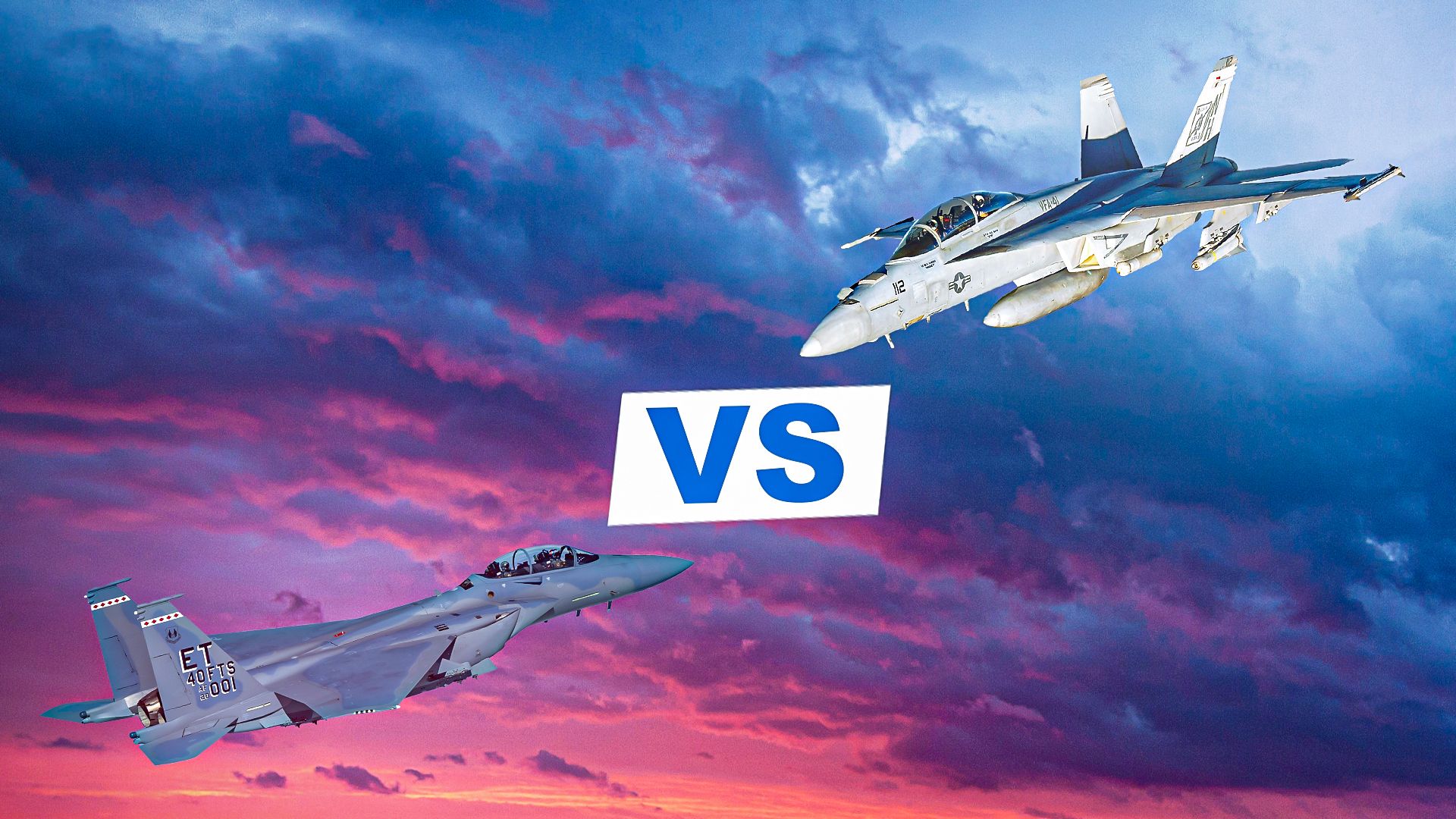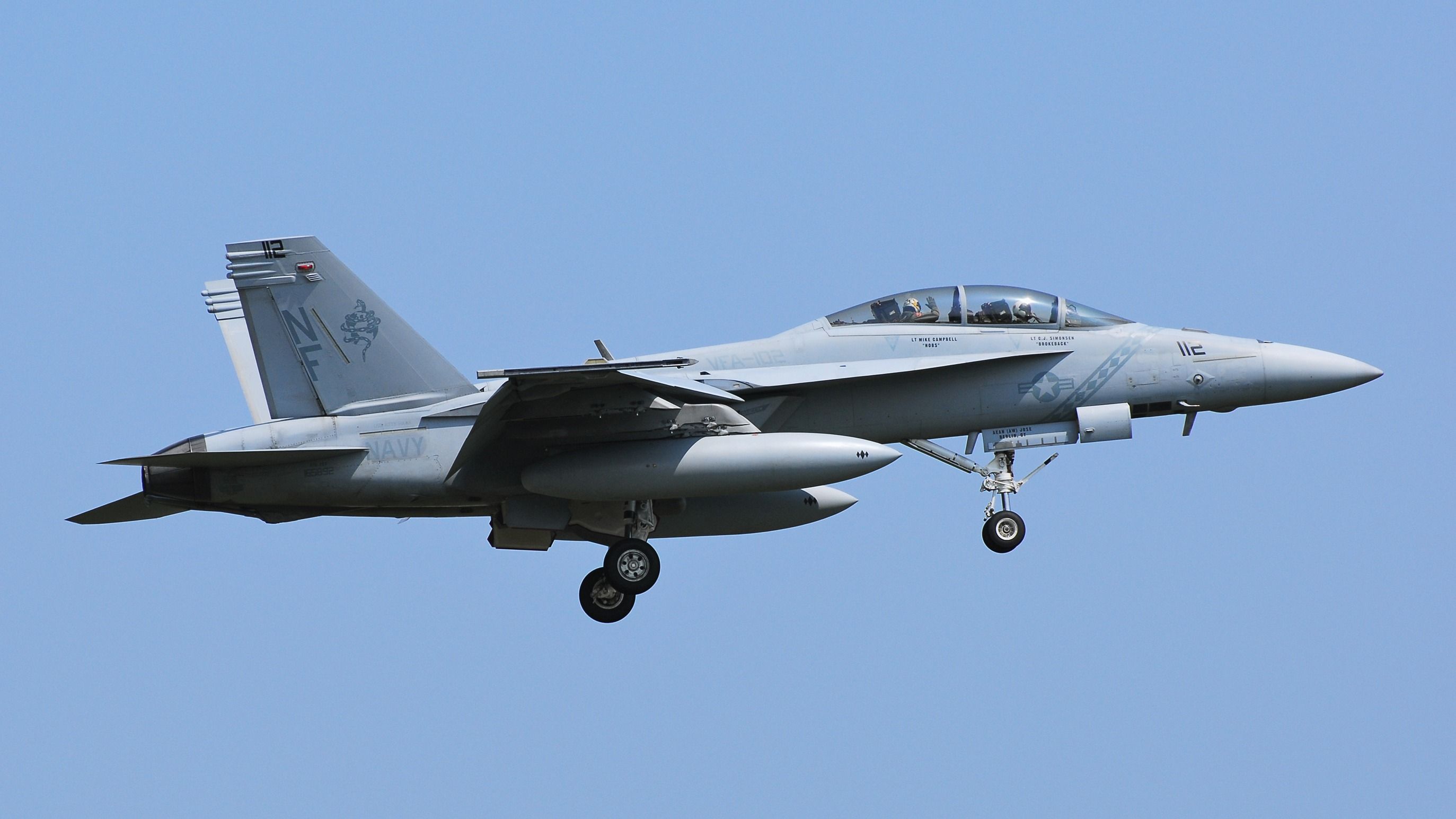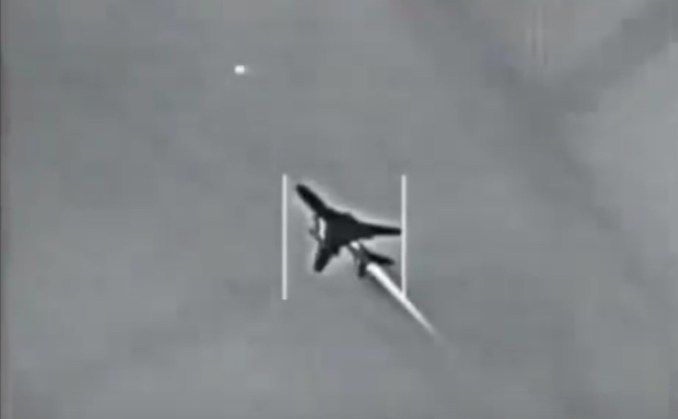Summary
- The F-15EX Eagle II, with operational service set to start in July, has been ordered by USAF, Israel, and Saudi Arabia.
- The F-15EX boasts 12 missile hardpoints, a precise targeting pod, and EPAWSS defense mechanisms.
- The F/A-18E/F Super Hornet has been combat-proven in various operations, including air-to-air combat success.
Aahh, the wonderful world of interservice rivalries. This article pits two all-American 4th Generation jet fighters against each other; one is a US Air Force asset, the other a US Navy and Marine Corps platform.
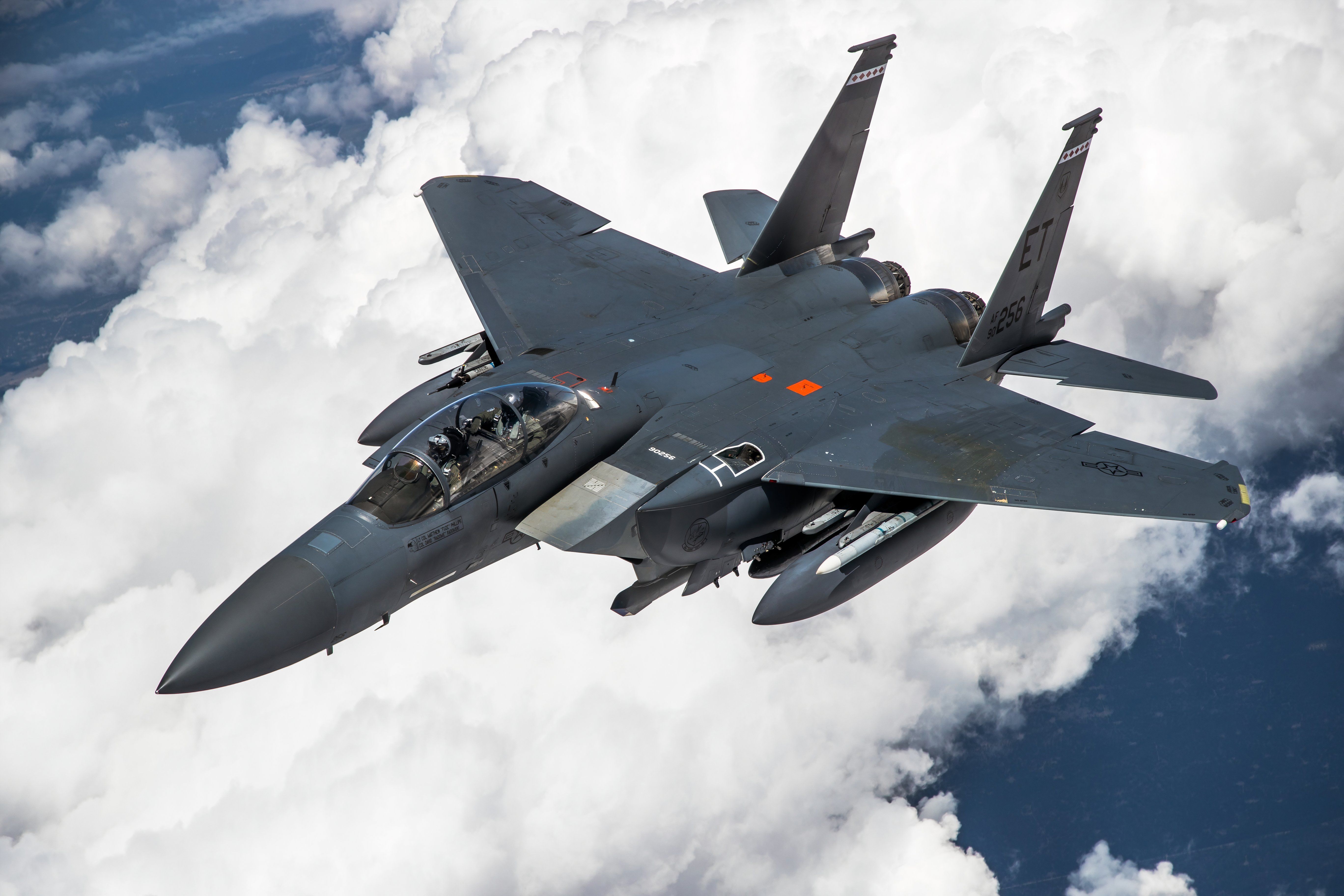
Related
Top 5 Air Superiority Features Of The F-15EX Eagle II
The F-15Ex’s operational service begins in July.
But, this interservice aerial contest comes with a bit of a twist: it’s also an intra-manufacturer rivalry, as both contending warbirds are made by the same manufacturer: Boeing. As in the USAF’s Boeing F-15EX Eagle II vs. the USN’s/USMC’s Boeing F/A-18E/F Super Hornet. So then, who would win in this Boeing vs. Boeing fighter jock matchup?
![7187927 (4x3) - F/A-18F Block III Super Hornet assigned to VX-9 [Image 3 of 5]](https://static1.simpleflyingimages.com/wordpress/wp-content/uploads/2024/04/7187927-4x3.jpg)
Related
A Look At The Last Of The US Navy’s F/A-18 Super Hornet Orders
Putting the last US Navy orders of the Boeing F/A-18E/F Super Hornet into perspective.
F-15EX Eagle II early history
The Boeing F-15EX Eagle II made its maiden flight on February 2, 2021, eight years after the so-called “Advanced Eagle,” 25 years after the then-McDonnell Douglas F-15E Strike Eagle, and, hard to believe as this may seem, 49 years after the maiden flight of the original McDonnell Douglas F-15 Eagle. The EX is intended to achieve official operational status sometime next month. Besides the USAF, the Eagle II has been ordered by the air forces of Israel and the Kingdom of Saudi Arabia (KSA).
McDonnell Douglas merged with Boeing in 1997.
So then, what differentiates the Eagle II from earlier versions of this venerable platform, Simple Flying’s Dr. Omar Memnon sums it up in the June 2024 article I linked next to the opening paragraph of this piece:
- “F-15EX has 12 missile hard points, maximizing payload capacity and air superiority.
- The precise targeting pod aids in combat reliability and extended standoff ranges.
- Defense mechanisms like EPAWSS enhance survivability in highly contested environments.”
F/A-18E/F Super Hornet early history
The then-McDonnell Douglas F/A-18E/F Super Hornet made its maiden flight on November 29, 1995, 21 years after the debut of the original Hornet. It was adapted by the USN in 1999 and attained initial operating capability (IOC) in 2001, replacing the iconic Grumman F-14 Tomcat (how poetic that both planes would end up as stars of the “Top Gun” film franchise).
Photo: viper-zero | Shutterstock
As to what differentiates the Super Hornet from the original, Simple Flying’s Rytis Beresnevičius sums it up in a nutshell:
“Essentially, the Super Hornet is a modernized and much better version of the Hornet, with the former addressing the latter’s shortfalls…The Super Hornet was designed to have increased weight, power, and survivability against growing threats.”
USAF Eagle II vs USN Super Hornet head-to-head
To use a boxing analogy, let’s start by looking at the “tale of the tape,” i.e. the two fighters’ technical specs side-by-side:
|
F-15EX |
F/A-18E/F |
Advantage |
|
|
Max Airspeed: |
Mach 2.5 (1,650 mph; 2,655 km/h; 1,666 kn) at high altitude |
Mach 1.55 (1,190 mph; 1,915 km/h; 1,030 kn) at 40,000 ft (12,190 m) |
Eagle |
|
Powerplant: |
2 × General Electric (G.E.) F110-GE-129 afterburning turbofan, 17,155 lbf (76.31 kN) thrust each dry, 29,500 lbf (131 kN) with afterburner |
2 × G.E. F414-400 turbofans, 13,000 lbf (58 kN) thrust each dry, 22,000 lbf (98 kN) with afterburner |
Eagle |
|
Combat Range: |
791 mi (1,272 km; 687 NM) |
532 mi (856 km;462 NM fighter escort (air-to-air) mission on internal fuel only |
Eagle |
|
Ferry Range: |
2,070 mi, (3,330 km; 1,800 NM) |
2,400 mi, (3,900 km;2,100 NM) with conformal fuel tanks and three external fuel tanks |
Eagle |
|
Service Ceiling: |
52,300 ft (15,940 m) |
60,000 ft (18,000 m) |
Eagle |
|
Rate of Climb: |
44,882 ft/min (228 m/s) |
50,000 ft/min (250 m/s) + |
Eagle |
|
Thrust/Weight |
0.93 |
0.93 |
Even |
|
Armament: |
|
Avionics |
Eagle |
So, on paper, the Eagle II seems to have all the advantages. But that’s before you factor in the intangibles. For one thing, the Super Hornet is more maneuverable, with tighter turning abilities. What’s more, as noted by Edward Chang in a September 2020 article for The National Interest:
“For the Navy, the versatility of the Super Hornet, coupled with its cost-effectiveness, results in an aircraft that offers the widest range of competencies and still take off and land on an aircraft carrier. This last requirement is crucial, as it places limits on aircraft capabilities and design. In other words, the Strike Eagle may possess superior speed and range, but the F/A-18E/F can be placed closer to its target by virtue of flying off of a floating airbase at sea. This also means there are operational situations where the Super Hornet can be easily deployed, but the Strike Eagle cannot. In fact, in the event of a crisis, the F/A-18E/F is likely to be a first responder and on scene long before an F-15E shows up.”
The F/A-18E/F has the huge advantage of being combat-proven, whilst the F-15EX, as already indicated above, hasn’t even officially gone operational yet, which gives the USN/USMC flyboys’ and flygirls’ platform a leg up in terms of bragging rights as well as real-world experience.
The Super Hornet was first “blooded” in combat back on November 6, 2002, when, in support of Operation Southern Watch (which filled the 12-year gap between Operation Desert Storm, i.e. the 1991 Persian Gulf War, and the commencement of Operation Iraqi Freedom [OIF], i.e. the 2003 Iraq War to finally overthrow Iraqi strongman Saddam Hussein), two F/A-18Es — attached to the US Navy’s Strike Fighter Squadron 115 (VFA-115) — conducted a “Response Option” strike on two surface-to-air missile (SAM) launchers at Al Kut, Iraq and an air defense command and control(C2) bunker at Tallil Airbase. In the process, one of the Super Hornet drivers dropped 2,000 lb (910 kg) JDAMs from the Super Hornet for the first time during combat.
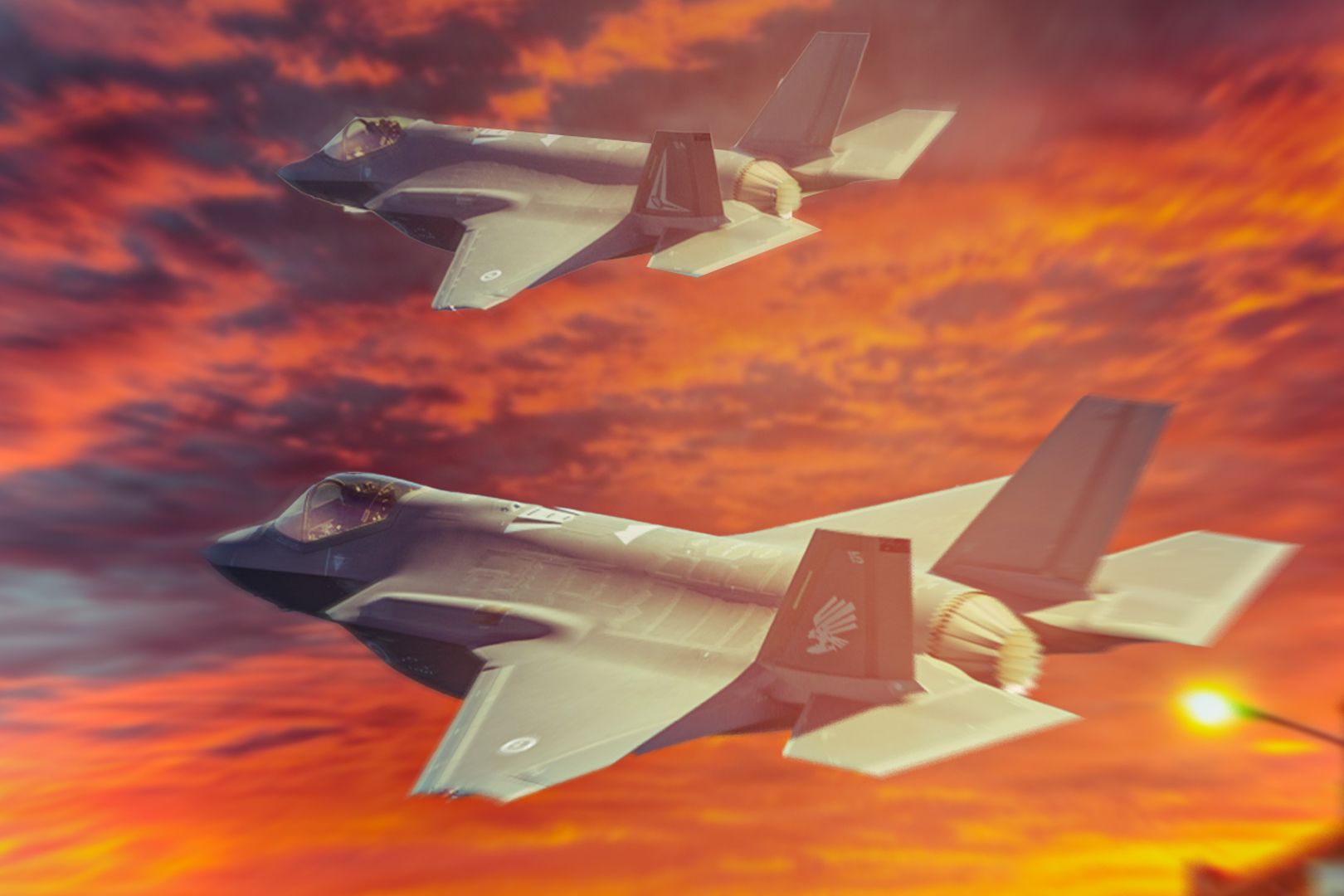
Related
Does The Royal Australian Air Force Have Fighter Jets?
Short answer: Yes! The RAAF has three; the F-35, the E/A-18G, and the F/A-18F.
Since then, the F/A-18E/F has proven its worth in combat operations time and time again, from OIF to Operation Enduring Freedom (OIF) in Afghanistan to Operation Inherent Resolve (the air campaign against the ISIS terror group) to the current anti-Houthi campaign in Yemen, not just in USN/USMC hands but in the capable hands of the Royal Australian Air Force as well. And while most of the combat usage of the Super Hornet has been for air-to-ground missions, the warbird has also passed the acid test of air-to-air combat: on June 18, 2017, U.S. Navy F/A-18E downed a Syrian Air Force Sukhoi Su-22 “Fitter” fighter-bomber. This signified the first aerial kill of a crewed aircraft by an American fighter since 1999 and the USN’s first since Operation Desert Storm.
That said, even though the EX variant of the F-15 has yet to receive its proverbial baptism of fire, the combat legacy of the Eagle jet is second to none. Though F-15s have certainly suffered their fair share of losses to enemy ground fire, the platform has, after five decades, NEVER been shot down in air-to-air combat; as I noted in a May 2022 article for 19FortyFive, we’re talking about an absolutely mind-boggling 104:0 kill ratio against enemy aircraft, ladies and gentlemen!
For the basis of comparison, though the Super Hornet hasn’t yet been shot down in combat, it doesn’t have anywhere near the incredible kill tally that the Eagle family does. In addition, at least one earlier model Hornet *has* been shot down in combat: America’s very first casualty of Operation Desert Storm, then-LCDR (later posthumously promoted to CAPT) Michael Scott Speicher’s F/A-18 Hornet, Naval Bureau Number (BuNo) 163484, was shot down on the very first night of the conflict, by an Iraqi Air Force (IqAF) MiG-25 “Foxbat” piloted by Mulazim (Lieutenant) Zuhair Dawoud, using an R-40 (AA-6 “Acrid”) missile.
Photos: Wikimedia Commons

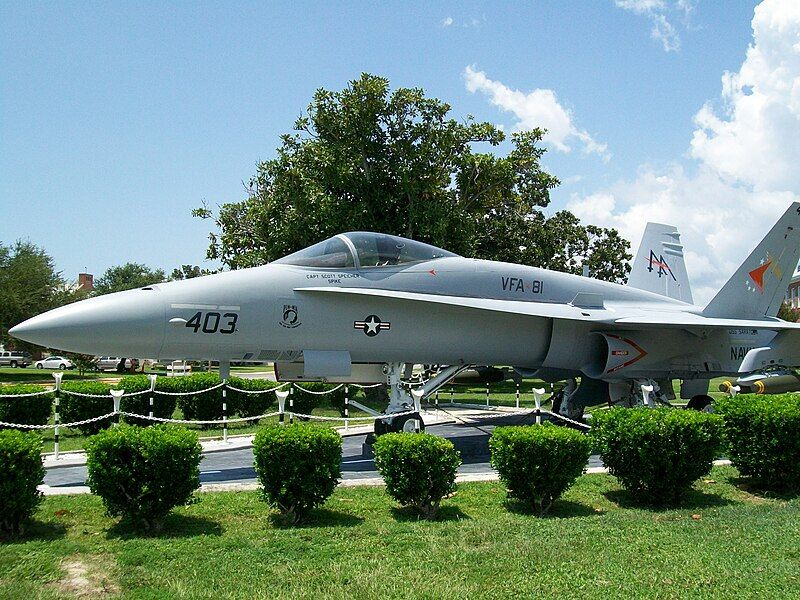
And the winner is….?
At the risk of committing Orwellian doublespeak, they both are! The Eagle II has the statistical capabilities in speed, power, and potential, whilst the Super Hornet has the intangibles and combat experience. However, if I were a fighter pilot and had my choice, I’d go with the Eagle (perhaps my personal USAF bias shows through there).
Putting aside those aforementioned interservice rivalries in the spirit of “One Team, One Fight,” the US Armed Forces are fortunate to have both of these amazing warbirds in the arsenal.

